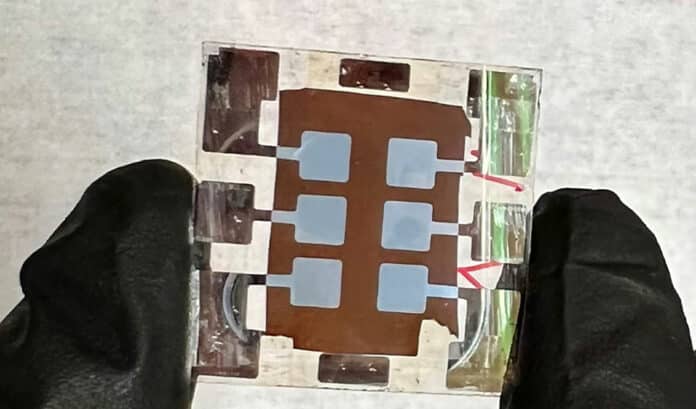The development of highly stable and efficient wide-bandgap perovskite solar cells based on a rich mixture of bromine and iodine is considered critical for the creation of tandem solar cells. However, the two elements tend to separate when exposed to light and heat and thus limit the voltage and stability of a solar cell.
Now, researchers at the National Renewable Energy Laboratory (NREL) have developed a new way to manufacture perovskite solar cells that have addressed previous problems and yielded devices with high efficiency and excellent stability.
The newly developed approach builds upon the previous work that flipped the typical perovskite cell. This inverted architectural structure allowed the researchers to increase both efficiency and stability and to easily integrate tandem solar cells.
Using the same architecture, the NREL-led group now moved further away from the conventional method of making a perovskite. While the traditional method uses an antisolvent applied to the crystallizing chemicals to create a uniform perovskite film, the new approach relied on gas quenching, in which a flow of nitrogen was blown onto the chemicals. The result addressed the problem of the bromine and iodine separating, resulting in a perovskite film with improved structural and optoelectronic properties.
This new approach allows the crystals to grow rapidly and uniformly within the perovskite film, crowding each other and leading to defects where the grain boundaries meet. When applied to high-bromine-content perovskite chemicals, the gas-quenching process forces the crystals to grow together, tightly packed from top to bottom. This allows them to become like a single grain and significantly reduces the number of defects. The top-down growth method forms a gradient structure, with more bromine near the top and less in the bulk of the cell. The gas-quenching was also statistically more reproducible than the antisolvent approach.
Using this approach, researchers produced a wide-bandgap solar cell with an efficiency of greater than 20% and 1.33-volt photovoltage and little change in the efficiency over 1,100 hours of continuous operation at a high temperature. With this new approach, an all-perovskite tandem cell obtained an efficiency of 27.1% with a high photovoltage of 2.2 volts and good operational stability.
The team also tried argon and air as the drying gas with similar results, indicating that the gas-quench method is a general way to improve the performance of wide-bandgap perovskite solar cells. The new growth approach demonstrated the potential of high-performance all-perovskite tandem devices and advanced the development of other perovskite-based tandem architectures, such as those that incorporate silicon.
Journal reference:
- Qi Jiang, Jinhui Tong, Rebecca A. Scheidt, Xiaoming Wang, Amy E. Louks, Yeming Xian, Robert Tirawat, Axel F. Palmstrom, Matthew P. Hautzinger, Steven P. Harvey, Steve Johnston, Laura T. Schelhas, Bryon W. Larson, Emily L. Warren, Matthew C. Beard, Joseph J. Berry, Yanfa Yan, and Kai Zhu. Compositional texture engineering for highly stable wide-bandgap perovskite solar cells. Science, 2022; DOI: 10.1126/science.adf0194
